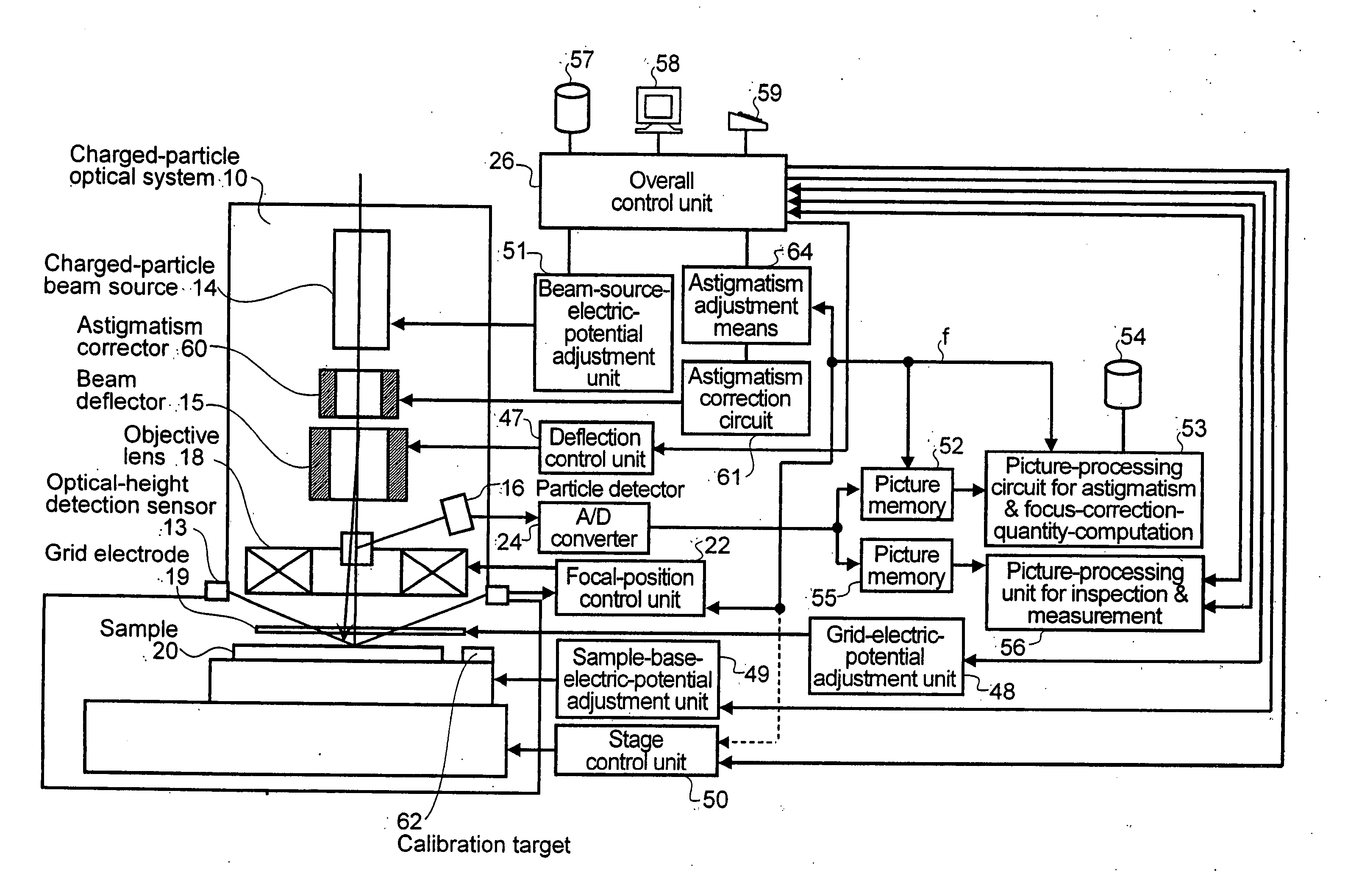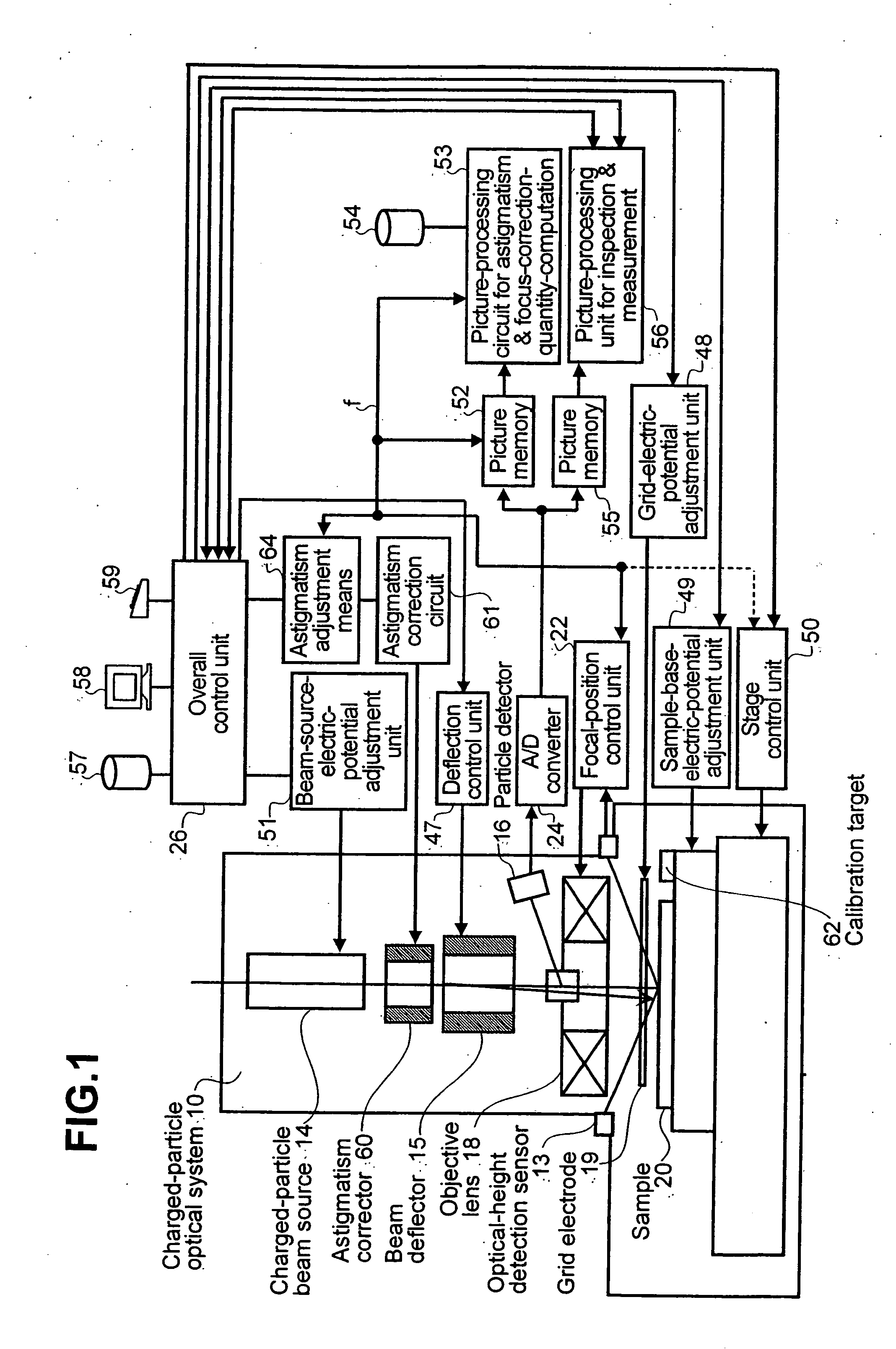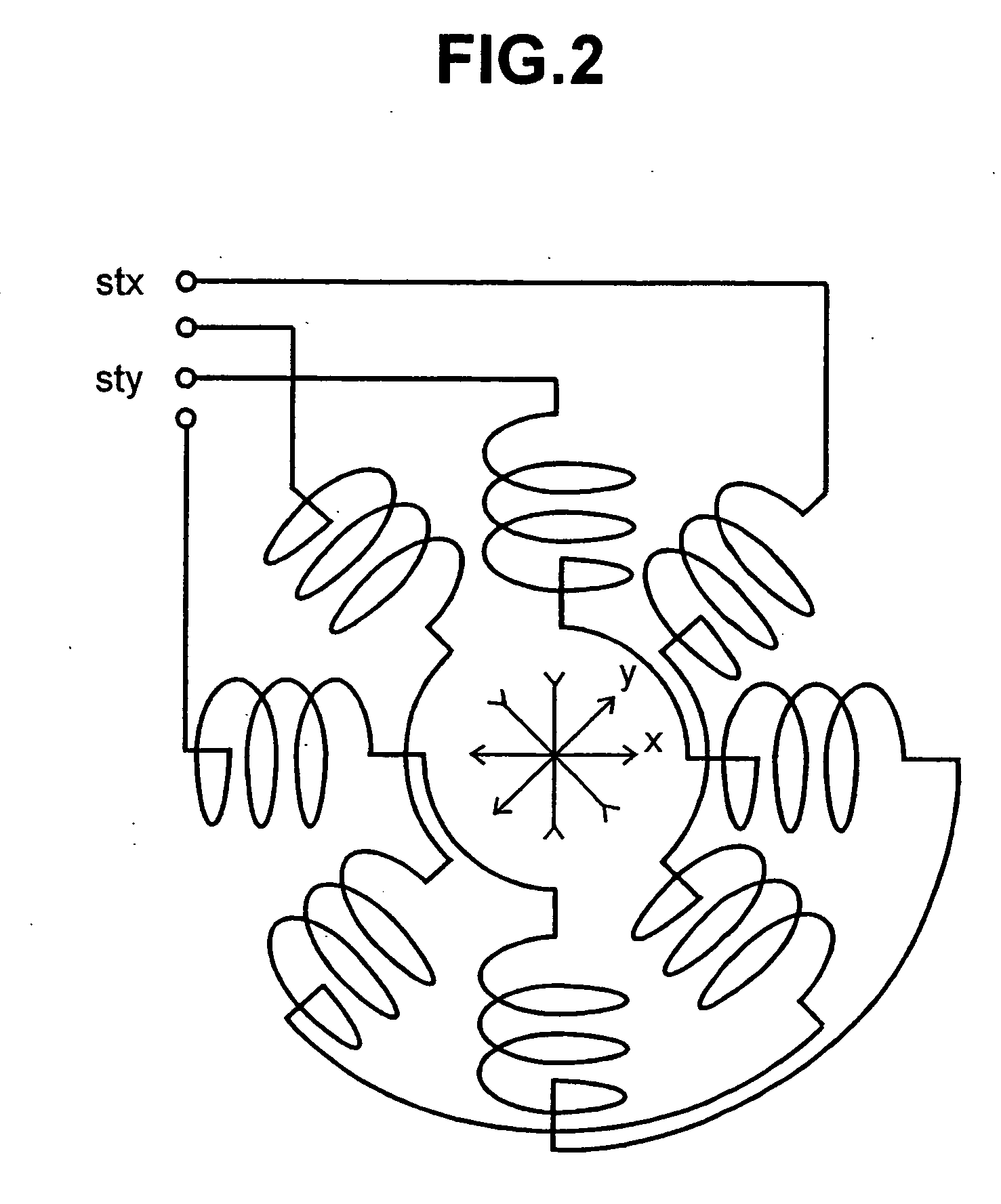Charged-particle beam apparatus and method for automatically correcting astigmatism and for height detection
a beam apparatus and beam beam technology, applied in the direction of material analysis using wave/particle radiation, instruments, nuclear engineering, etc., can solve the problems of high processing time, sample damage, and a lot of time to measure an optimum control current before inspection
- Summary
- Abstract
- Description
- Claims
- Application Information
AI Technical Summary
Problems solved by technology
Method used
Image
Examples
first embodiment
[0177] As a first embodiment, a particle image is detected and observed by the particle detector 16. The particle image is detected by radiating a charged-particle beam to a sample (target) 62 in a scanning operation. The target 62 is used specially for automatic correction of astigmatism. The sample 62 has a striped pattern with a stripe direction varying from area, to area as shown in FIG. 7(a). The directional sharpness dθ is found by measuring the amplitude of a particle image in each area. The amplitude can be found by directly measuring an amplitude {=a maximum value of s (x, y)−a minimum value of s (x, y)} in each area or by measuring a variance of a concentration quantity (gradation quantity) of a particle image in each area. The variation V is expressed by the following equation:
V=Σxy(s(x,y)−s mean)2 / N.
As an alternative, the amplitude can also be found by computing a sum of absolute values Σxy|t(x, y)| or a sum of squares Σxy(t(x, y))2, where notation t (x, y) denotes a d...
second embodiment
[0178] A second embodiment is provided for a pattern created on the sample 20 or the target 62, as shown in FIG. 7(b). In this case, the directional sharpness dθ is found by carrying out a directional-differentiation process on a particle image detected by the particle detector 16. The directional-differentiation process is carried out by convolution of a mask, similar to the one shown in the figure, on the image. Then, a sum of squares of values at all points on the image of a differentiation is computed so as to be used as the directional sharpness dθ. The differentiation mask shown in the figure is a typical mask. Any mask other than the typical mask can be used as long as the other mask satisfies a condition for the differentiation. The condition requires that two pieces of data at any two positions symmetrical with each other with respect to a certain axis shall have signs opposite to each other and equal absolute values. For suppression of noise and improvement of direction se...
PUM
 Login to View More
Login to View More Abstract
Description
Claims
Application Information
 Login to View More
Login to View More - R&D
- Intellectual Property
- Life Sciences
- Materials
- Tech Scout
- Unparalleled Data Quality
- Higher Quality Content
- 60% Fewer Hallucinations
Browse by: Latest US Patents, China's latest patents, Technical Efficacy Thesaurus, Application Domain, Technology Topic, Popular Technical Reports.
© 2025 PatSnap. All rights reserved.Legal|Privacy policy|Modern Slavery Act Transparency Statement|Sitemap|About US| Contact US: help@patsnap.com



